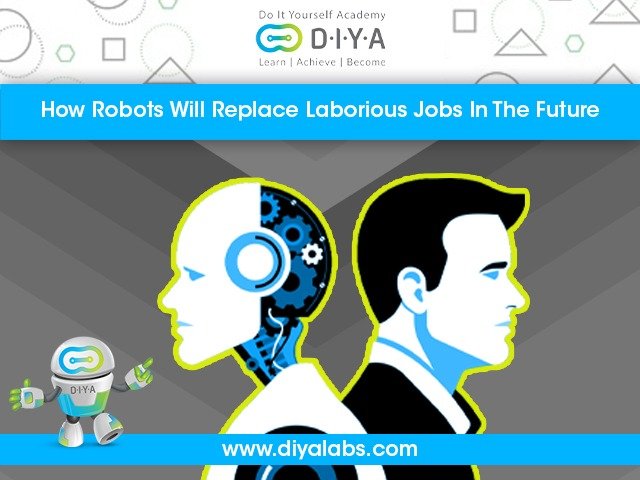How robots will replace laborious jobs in the future

How robots will replace laborious jobs in the future and in what way that’ll affect the end productivity of humans
It's just the beginning of the human-robot duel. Technology is a double-edged sword. On one side, it improves productivity and quality and reduces human risk. On the other side, there is always a fear that technology will replace humans, leading to the loss of jobs for millions of people. It will have far-reaching effects, from destroying economies to worsening the mental and emotional health of people.
Stat speaks about robots and the job scenario
In 2013, Oxford University published a study that said that nearly 47% of human-based jobs will be replaced by robots in the United States in 20 years. We are now near that 2-decade mark and we can see that many jobs have been taken over by the robots. Statistics show that South Korea has 631 robots at work, Singapore has 488, and Germany has 309. The numbers may seem small in comparison. However, they can easily displace the jobs of thousands of humans. A recent study by Deloitte and the Manufacturing Institute predicts that by 2025, there will be 2 million unfilled jobs. Most of these jobs are dangerous and require repetitive work or are in unsafe locations. Robots are easily the top contenders for such jobs.
Implementing Robotics on the Production Floor
Hollman is one of the largest producers of wood and laminate lockers in the world. They had initially used only the human workforce in the entire production cycle. In July 2018, they brought in a robot to handle the heavy lifting and sorting jobs. It was for two purposes. One was to reduce or completely stop the increase in back injuries caused due to carrying heavy materials. The second reason was to step up the production. The robot helped the manufacturer both ways. It would completely move the materials into the warehouse overnight, so everything was in place when the workers came in the morning. Production easily increased three-fold.
The Other Side of Robotic Applications
Though the world has been moving toward automation and robotics, there are many who are still wary about the applications and the long-term results. In 2017, the International Federation of Robotics reported that less than 10% of jobs can be completely automated. This means that we need to have a hybrid working model that includes both humans and robots.
What’s in the Future?
We now have robots with in-built sensors that can identify when humans are nearby or if there are any obstacles on their route. Improved safety features and intelligent self-driven modes are enabling humans and robots to work in tandem. Artificial intelligence has greatly transformed industries, from manufacturing to IT and security. However, the undeniable truth is that human intelligence is essential for powering artificial intelligence. In the future, we may see many of the laborious, repetitive, and dangerous jobs taken up by robots. We may even have robots that start teaching children. But, human intervention will definitely be required at some point. In the future, robots may take up more than half of the jobs that humans are currently doing. At the same time, we may have new kinds of jobs that require human intelligence and fine motor skills. The future may have workplaces where robots and humans need to work together as a team. How robots will replace laborious jobs in the future and in what way that’ll affect the end productivity of humans